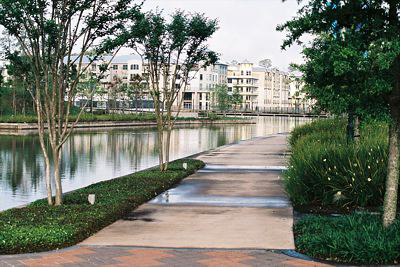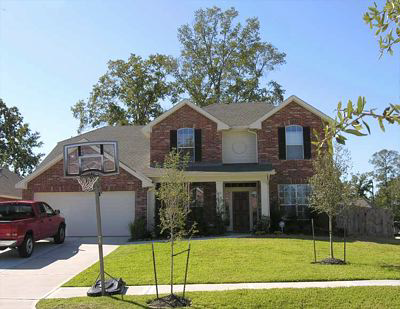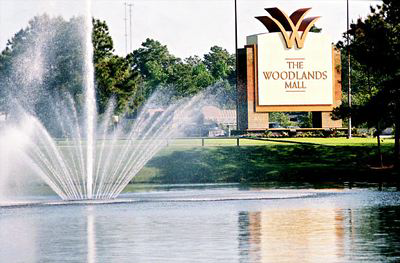No Light Rail in Vancouver!

Flickr photo by HJPotter.
The Woodlands is a 28,000-

Flickr photo by ljmacphee.
“You name a place for what is no longer there as a result of your actions,” a developer once told Joel Garreau. But the Woodlands is an exception, as it has retained 1,500 acres of woodlands and 4,200 acres of other open spaces, not to mention 1,700 acres of golf courses. In other words, more than one out of four acres are public open spaces.

Flickr photo by ljmacphee.
The community also has 145 miles of bike trails, plus swimming pools, skateboard parks, lakes, waterways, and numerous other recreation facilities. Of course, the large yards accompanying most homes in the Woodlands are also a source of recreation and open space.
The Woodlands is also affordable, with many new and existing homes selling for well
under $250,000. Current listings of new homes show, for example, a 4-

This tile-
The Woodlands is growing rapidly, with census counts increasing from under 56,000 in 2000 to more than 80,000 in 2005. It should be completely built out in 2011, after which residents hope to incorporate or at least resist annexation by Houston.
Under Texas law, most of the Woodlands is within Houston’s “extraterritorial jurisdiction,” which gives Houston the right to annex land without the permission of the landowners and to veto local incorporation. The Woodlands residents’ persuaded the legislature to put a moratorium on Houston annexation, and hope to persuade Houston to let them incorporate after the moratorium expires.
If I recall my history correctly, Congress passed a law in the 1960s providing grants
to developers who wanted to build master-
The main obstacle to master-

Flickr photo by HJPotter.
One developer told Garreau that master-
But Google master-
Typically, a developer buys a 5,000 to 30,000 acre ranch and draws up the master
plan. The developer then sells portions of it to various builders who concentrate
on commercial, housing, or other parts of the development. Irvine and Valencia, California,
and Reston, Virginia, all of which began in the 1960s, certainly fit the definition.
But unless California planners ease up on their regulation, the Golden State is not
likely to see any more true master-
A place doesn’t have to have master planning to be livable. When no one developer
can acquire enough land to build a master-
But if planners want to get a job that truly promotes livability, they ought to go work for developers instead of the government. If government planners would get out of the way, more developers would have an opportunity to build communities like the Woodlands.
9
Trackback • Posted in City planning
Anti-

If I had to live in a major urban area, I would like to live in a place like the
Woodlands, a master-
Reprinted from The Antiplanner